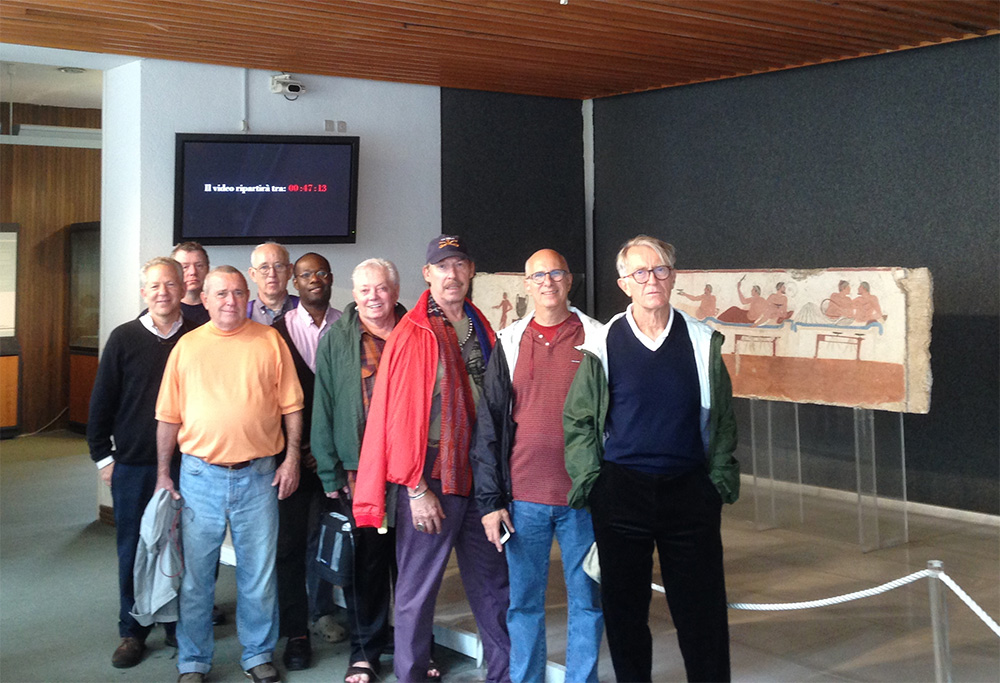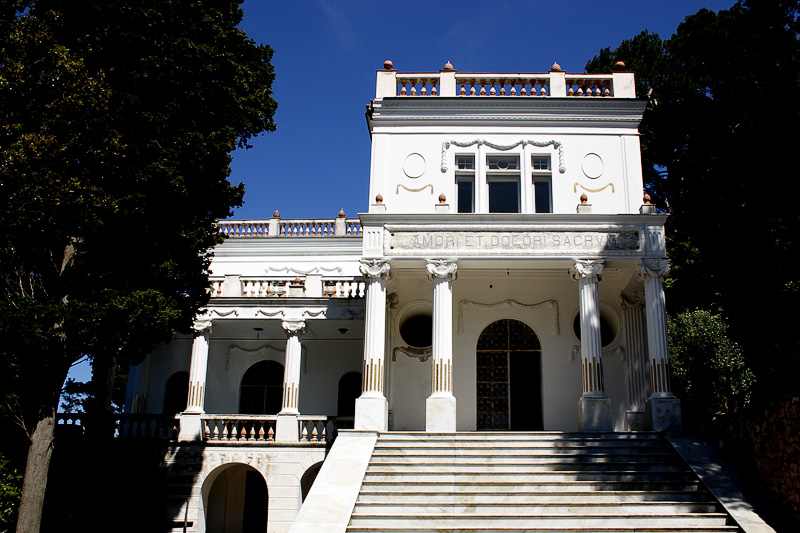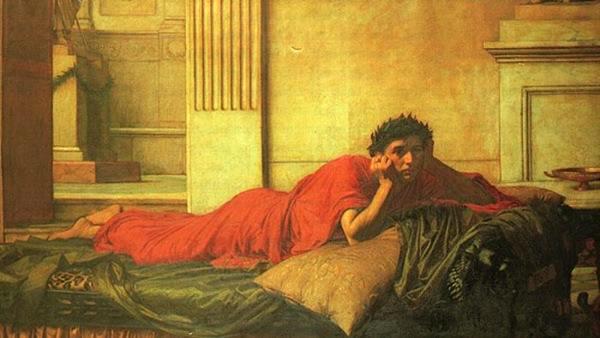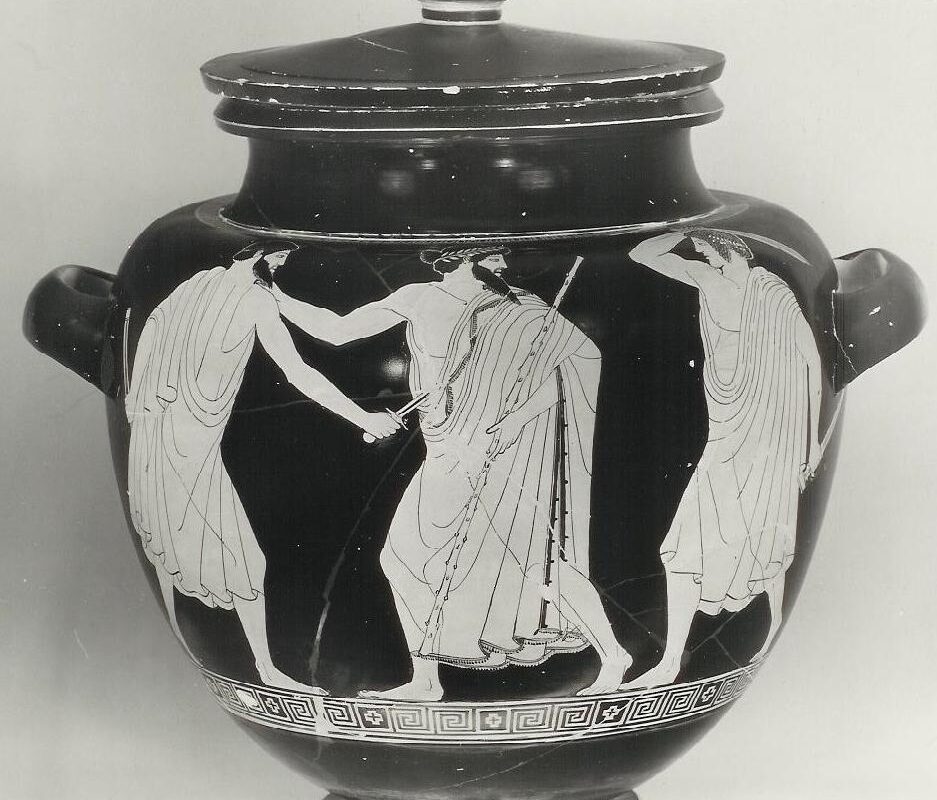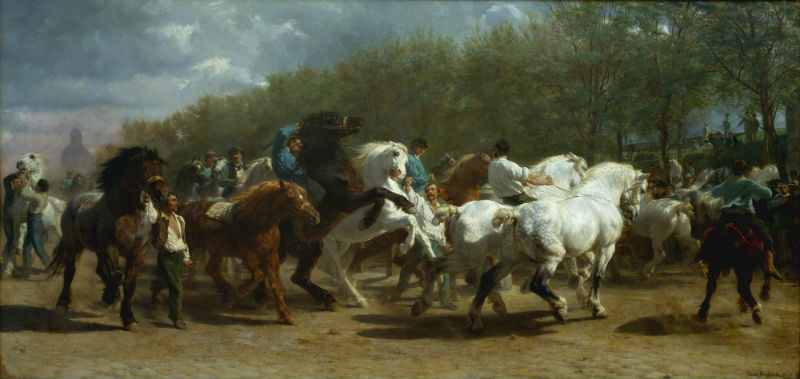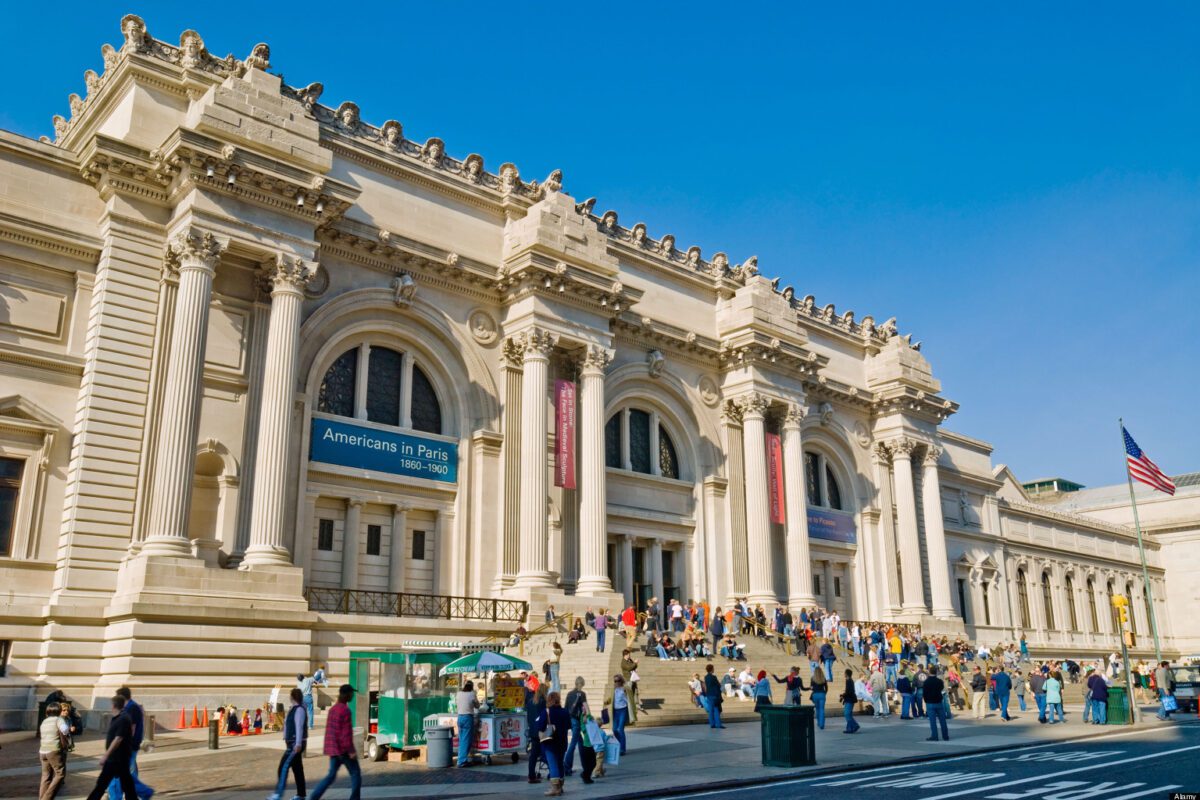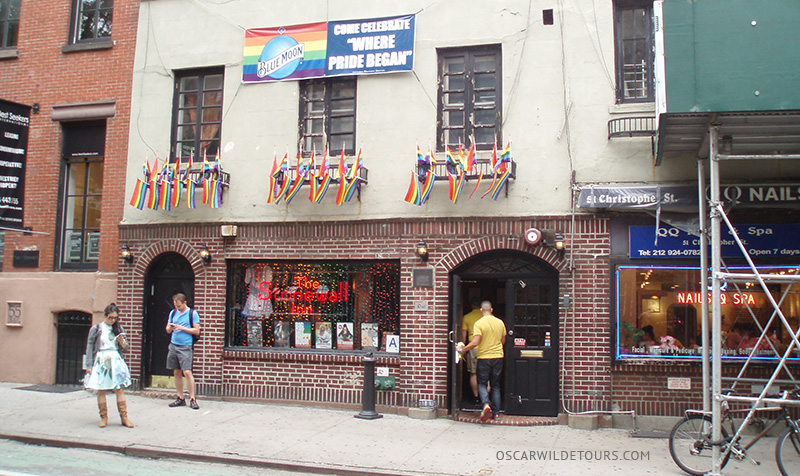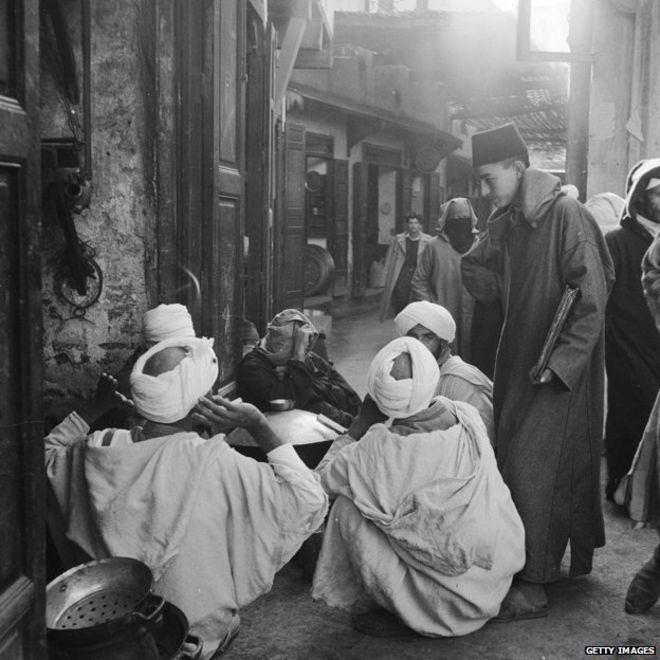For a couple of days, I’ve been thinking I need to write a summary blog post about the first gay history and art tour of Italy. But how to talk about 10 intense days of touring? Should I talk about the people? I’d have to ask for everyone’s permission to tell you about the fascinating cast of characters; but I can tell you that it was a very lively group and gratified me in particular by how well they got along. I remember how happy I was when I passed the bar at our gorgeous hotel overlooking the bay of Sorrento and saw them all having drinks together. It was that way right until the last breakfast.
Gay History on Capri
Our gay history and art tour of Italy is starting in 5 days, so I’m in Italy making a few last-minute arrangements. And in the meantime, I’m doing a bit of gay history exploration–today an exploration of gay Capri. I went out to Capri mainly to look into the ruins of Emperor Tiberius’ villa. Tiberius, Augustus’ stepson and successor, has a miserable reputation. The main problem seems to be that he hated being Emperor; plus he didn’t have much charisma–and Augustus was a hard act to follow. In the end, he retired to a villa on Capri for the last ten years of his reign. Frankly, my suspicion is that like Greta Garbo, he wanted to be alone.
Nero’s Palace and Rome’s Gay History
Who was Rome’s gayest Emperor? That’s a tough one. There were rumors about almost every Emperor: Julius Caesar’s soldiers for instance joshingly called him “the husband of every wife and the wife of every husband.” One of the top competitors, however, is certainly Nero, who was said among other things to have married two of his male slaves:
Gay Heroes of Ancient Greece
Check out my latest blogpost for the Gay and Lesbian Review. It’s about Harmodius and Aristogeiton. Along with Achilles and Patroclus in the Iliad (whom the ancient Greeks mostly saw as a couple), Harmodius and Aristogeiton were the biggest gay heroes of ancient Greece . Harmodius and Aristogeiton were a Greek-style male-male couple, who assassinated Hipparchus, brother of the Athenian tyrant Hippias. This may have been a private act of revenge, and it happened more than ten years before the end of the tyranny. But the Athenians thought of them as the founders of the democracy. Their story shows how different cultural attitudes toward gay love can be. The Athenians wanted a male-male couple to have founded the democracy, because they considered a certain kind of male-male love the ideal matrix for courage and loyalty to your fellow soldier!
Gay Italy tour in October 2015!
Here’s a blog post that I wrote last week for the Gay and Lesbian Review about our gay Italy tour. The GLR has decided to recommend our tour to their readers; the Leslie Lohman Museum will also recommend us to their members soon. These are institutions of which I think very highly, so I am thrilled to have won their good opinion!
Our LGBT history Met tour in Curve!
We recently got a great write-up from Merryn Johns, Curve Magazine’s wonderful editor-in-chief. This is a source of great pleasure to me, as I have struggled hard to include Lesbian history in our tours. Unfortunately, as anyone who studies LGBT history knows, there is less evidence for Lesbian history than gay male history from almost every period and place and culture. This is not as you might imagine because of prejudice against Lesbians.
Gay history in New York
In the last few weeks, I’ve been planning a gay history tour of New York for the spring for Oscar Wilde Tours. New York is truly one of the great gay cities, along with London, Paris, Berlin, Florence, or Athens. Ever since the days before the Civil War, when Walt Whitman hung out with his Bohemian friends at Pfaff’s Beer Cellar at Broadway and Bleecker, it has been a major center of gay life.
Gay history in Morocco and Southern Spain
Here is an interesting article about gay history in Tangier. Oscar Wilde Tours would love to organize a tour to southern Spain and Morocco in 2017. Southern Spain has a fascinatingly complex history, including a lot of gay history. Rome’s gayest emperor, Hadrian (whose male lover Antinous appears in museums in New York, London, Paris, Rome, Delphi, etc.) was from a city called Italica, the ruins of which are near modern Seville. Later on, there was a whole tradition of male-male poetry in Arab Spain, and sadly, the Inquisition was particularly active in southern Spain. As a result, Southern Spain’s lovely cities—Córdoba, Seville, and Granada—are a great place to learn about both tolerance and prosecution. And Seville is also the setting for one of the all-time favorite operas, Bizet’s Carmen. In fact, the once famous cigar factory (where Carmen works) is now the main building of the university.
And Morocco has a fabulous gay history as well. A certain fluidity about sexuality in the native culture attracted a host of gay Western artists in the 19th and early 20th century. As the article says:
“Morocco…has always been a nation where tolerance is practiced but not preached” As a result, “there was a time when Morocco was renowned as a haven for gay Americans and Britons, who fled restrictions in their own countries to take advantage of its relaxed atmosphere. And “Tangier’s huge literary legacy…includes Jean Genet, Andre Gide, Tennessee Williams, Truman Capote, Gore Vidal and Joe Orton, all of whom were gay or bisexual.”
Plus of course Morocco is gorgeous, with wonderful crafts and food, and….we would love to go there. But of course the Arab world is far less tolerant than it was in the days of the Spanish Arab love poets. Morocco is clearly the most stable, safest, and most tolerant Arab country left, but we would love to hear from our readers about their experiences there.
Continue Reading the full article: http://www.bbc.com/news/magazine-29566539

